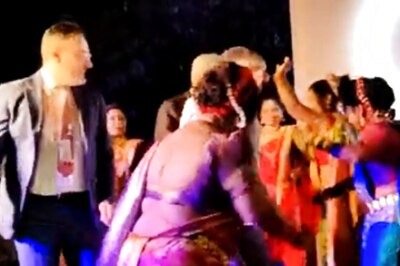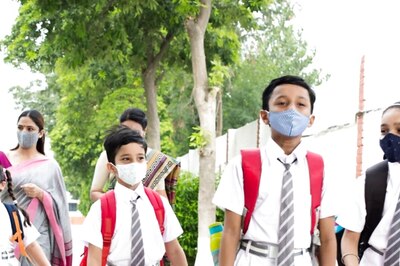
views
New Delhi: In matters of religion and religious practices, courts must tread with caution. This is the inherent message of the majority judgment by the Supreme Court in the Sabrimala case on Thursday as it accepted that its own judgment on women’s entry may need a relook.
Authored by Chief Justice of India (CJI) Ranjan Gogoi, the majority view expanded the scope of the present case by bringing into its ambit issues relating to Muslim women’s entry in mosques, Parsi women’s entry in fire temples as well the practice of female genital mutilation of women in the Dawoodi Bohra community, among other similar issues.
The court has referred to a seven-judge bench over 60 petitions seeking review of its 2018 judgment where it allowed women of all ages entry into Sabarimala. The bench will re-examine various religious issues, including the entry of women into mosques and the practice of female genital mutilation in the Dawoodi Bohra community.
While the five-judge bench unanimously agreed to refer the religious issues to a larger bench, it gave a 3:2 split decision on petitions seeking a review of the apex court's September 2018 decision.
A majority verdict by Chief Justice Ranjan Gogoi and Justices AM Khanwilkar and Indu Malhotra decided to keep pending the pleas seeking a review of its decision regarding the entry of women into the shrine, and said restrictions on women in religious places was not restricted to Sabarimala alone and was prevalent in other religions as well.
However, the majority verdict did not say anything adverse against the apex court's September 28, 2018 decision allowing women to enter the shrine nor did it stay the earlier judgement.
There is no clarity whether women can enter the shrine, which is scheduled to open for worship from November 17.
Writing for himself and Justices AM Khanwilkar and Indu Malhotra, CJI Gogoi sounded a word of caution while referring the issues to a larger bench of seven judges.
“In a legal framework where the courts do not have any epistolary jurisdiction and issues pertaining to religion including religious practices are decided in exercise of jurisdiction under Section 9 of the Civil Procedure Code or Article 226/32 of the Constitution the courts should tread cautiously. This is time honoured principle and practice,” said the judgment.
The majority view, therefore, clearly expressed that while a constitutional court may exercise its jurisdiction in a public interest litigation (PIL) to issue orders in religious matters, or resort to the Civil Procedure Code to assume jurisdiction in such matters, there is a convention that courts must be guarded and careful.
The three judges also noted that the verdict by a seven-judge bench judgment in the Shirur Mutt case in 1954 and a subsequent view taken by a five-judge bench in the Durgah Committee, Ajmer, vs Syed Hussain Ali & Ors case in 1962 also appear to be in conflict with each other.
While the Shirur Mutt case ruled that what are essential religious practices of a particular religious denomination should be left to be determined by the denomination itself, the Durgah Committee judgment held that courts could interfere with those affairs at a religious place which are “purely secular” in nature as also superstitious beliefs.
These two views, the majority judgment held, “seem to be in apparent conflict requiring consideration by a larger Bench”.
Seven issues were then framed by the majority judgment, which has sought a clarity by the larger bench as to the extent to which the court can enquire into the issue of a particular practice is an integral part of the religion or religious practice of a particular religious denomination or should that be left exclusively to be determined by the head of the section of the religious group.
Another important question referred to the larger bench is: “What would be the permissible extent of judicial recognition to PILs in matters calling into question religious practices of a denomination or a section thereof at the instance of persons who do not belong to such religious denomination?”
The split decision of the Supreme Court on Thursday came on 65 petitions — 56 review petitions, four fresh writ petitions and five transfer pleas — which were filed after the apex court verdict of September 28, 2018 sparked violent protests in Kerala.
The apex court, by a majority 4:1 verdict, had lifted the ban that prevented women and girls between the age of 10 and 50 from entering the famous Ayyappa shrine in Kerala and held that the centuries-old Hindu religious practice was illegal and unconstitutional.
The five-judge Constitution heard the review pleas in an open court and reserved its decision after hearing the parties, including Nair Service Society, Thantry of the temple, the Travancore Devaswom Board (TDB) and the state government.
The TDB, which runs the Sabarimala temple, had made a U-turn to support the Supreme Court's order allowing women of all ages to enter the shrine. The TDB had joined the Kerala government to oppose a batch of pleas seeking review of the historic verdict.
The Board had later asserted that its latest position was not due to any political pressure. Some right-wing activists alleged that the Board changed its stand before the court under pressure from the state's CPI(M)-led LDF government.
The Kerala government, which had taken conflicting stands on women's entry into the hilltop shrine, supported the verdict and urged the apex court to trash the review pleas.




















Comments
0 comment